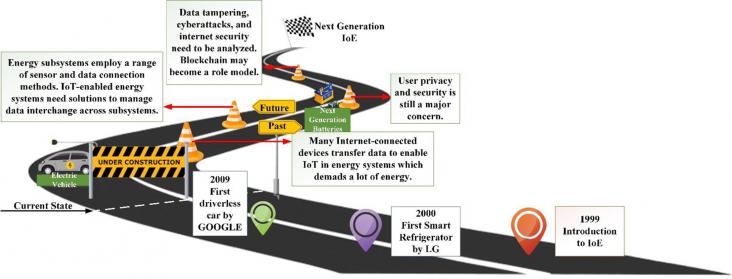
This article supports SDGs 9 and 11 by exploring the technological aspects of the Internet of Things, emphasizing blueprints, complexity, challenges, and future directions to improve performance, network security, and stability.
This article supports SDGs 7 and 13 by comparing the economy and carbon emissions of electrochemical energy storage (EES) and hydrogen energy storage (HES) in renewable energy storage, and it was found that lithium-ion batteries and certain HES routes perform best in LCOS and carbon emissions, supporting their use to achieve future decarbonization goals.
This article supports SDGs 7 & 13 by uncovering areas of consensus and disagreement between models and experts around the clean energy transition
This Article supports SDGs 3 and 13 by providing Long-term estimation of glacier mass balance using geospatial techniques in Western Himalayas, Ladakh, India.
This Article supports SDGs 3 and 13 by providing assessments and knowledge gaps along Ghana’s coast on the aspects of SLR, subsidence and coastal vulnerability.
This chapter advances the UN SDG goals 13, 14, and 15 by reviewing the role of biodiversity in sustainable development and the UN Sustainable Development Goals.
The results of this study, which looks at the emissions and performance of the ICE fueled by ethanol, are in line with SDGs 7 and 13. Regarding optimization and prediction, the distinctive combination of ANN and RSM encourages sustainable industrialization, more conscientious consumption, and more ethical production patterns. All these are crucial components of SDGs 9 and 12. To make refined decisions and achieve improved performance and emissions, this research can benefit engine producers and researchers. This alliance between scholars and industry stakeholders supports SDG 17 (Partnerships for the Goals), which also encourages knowledge-sharing to advance the SDGs as a whole.
This article tackles the issue of high energy consumption created by data centers. They find an immediate way to quickly mitigate some of the massive energy sink is by simply operating data centers at higher temperatures. As such, this article supports SDGs 9 (ensuring data centers that are key to current society are sustainable) and 13 (a rapid solution to immediately reduce fossil-fuel driven energy consumption).
This study supports SDG 13 by examining climatic features, M − K trend test, variability, precipitation concentration index and temperature variability on the role of smallholder farmers in eastern Ethiopia.

In The World We Want we explore key themes related to the SDGs: leadership, innovation and youth. Dr. Márcia Balisciano, Global Head of Corporate Responsibility, interviews influencers and thought leaders across disciplines on key topics to achieve the global goals.
